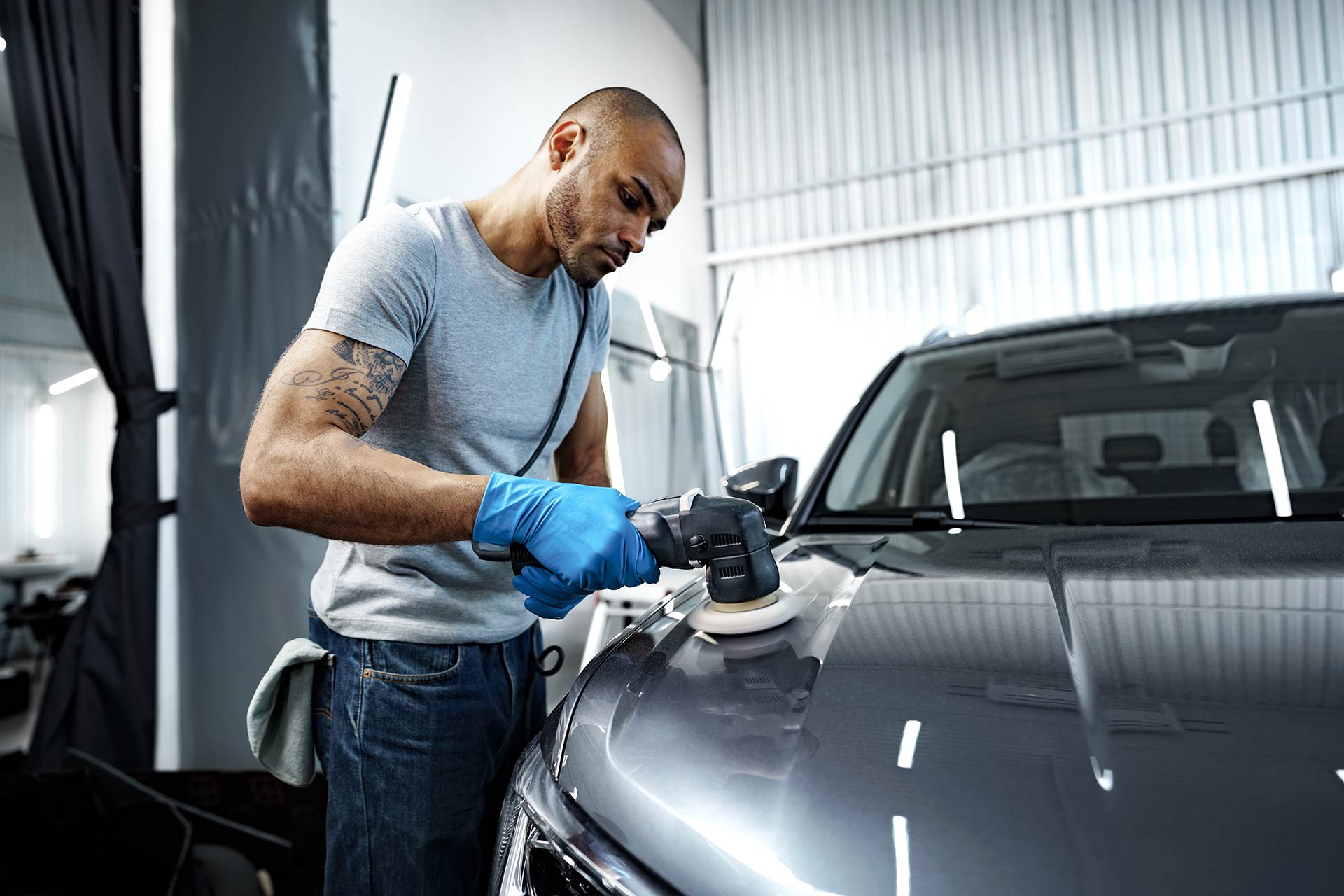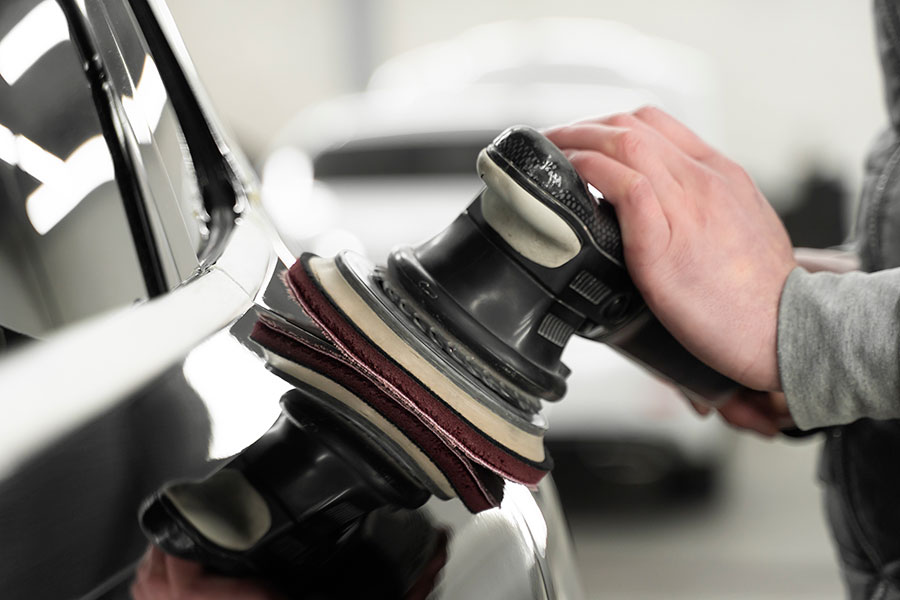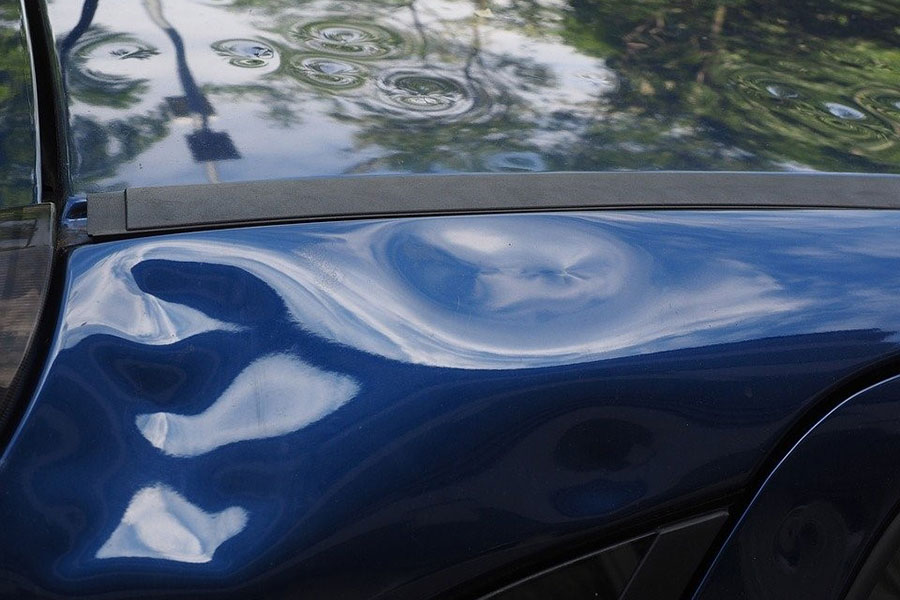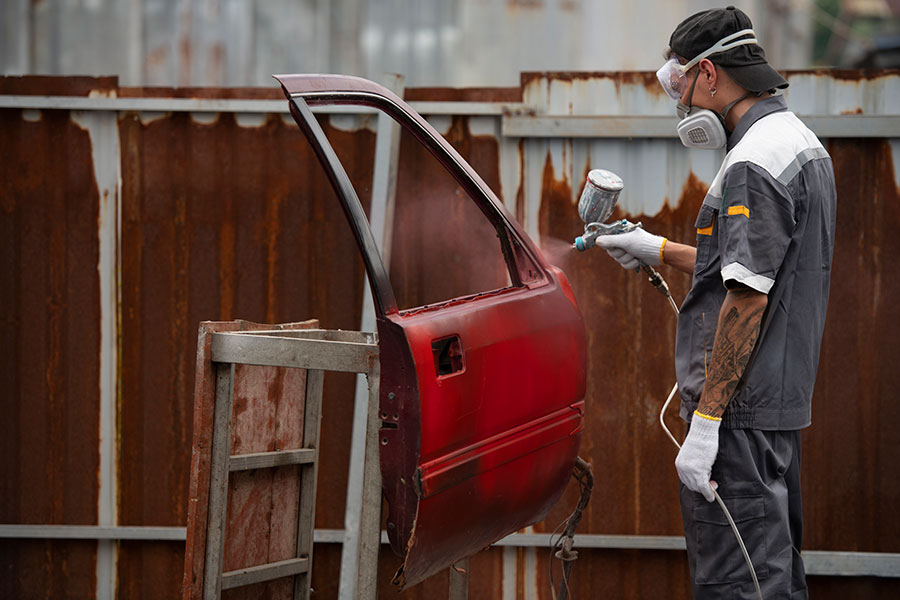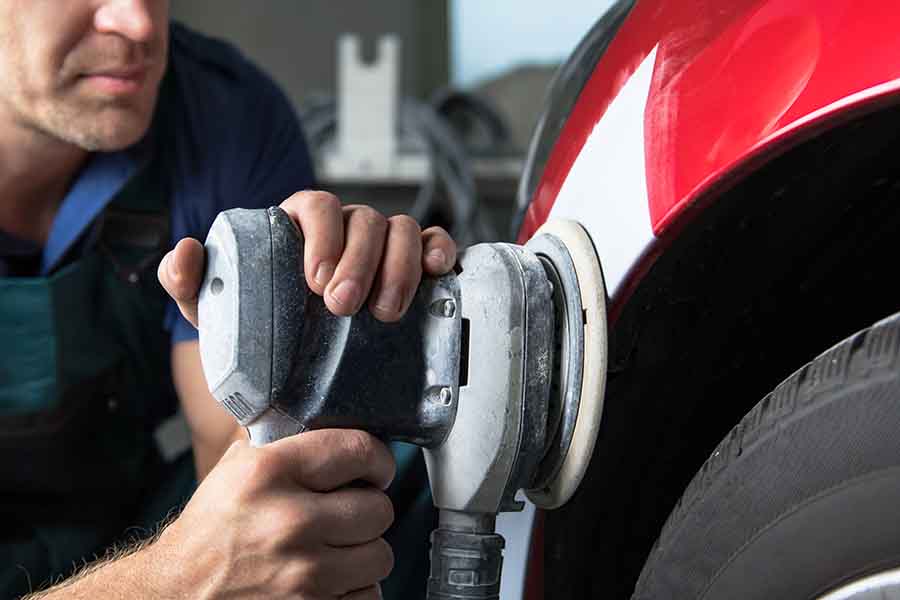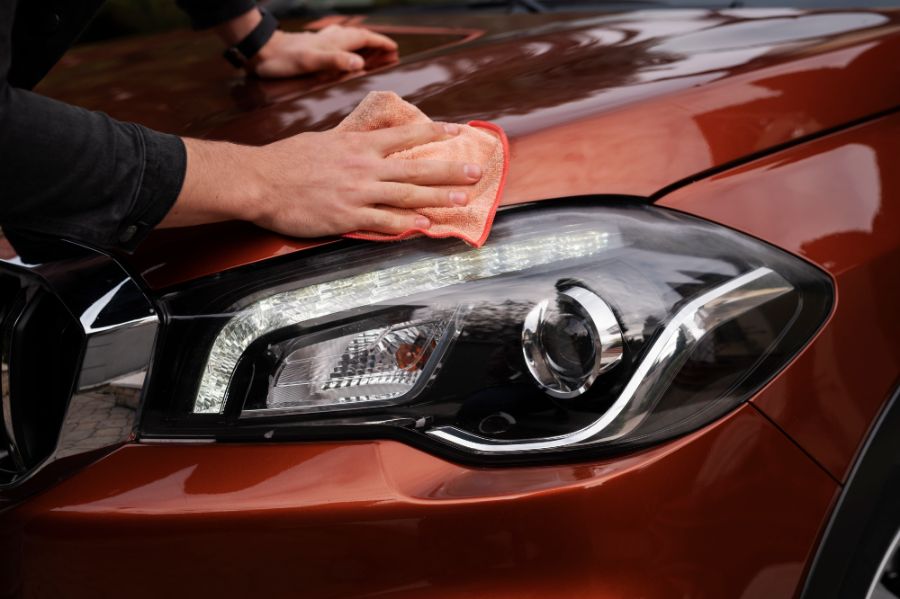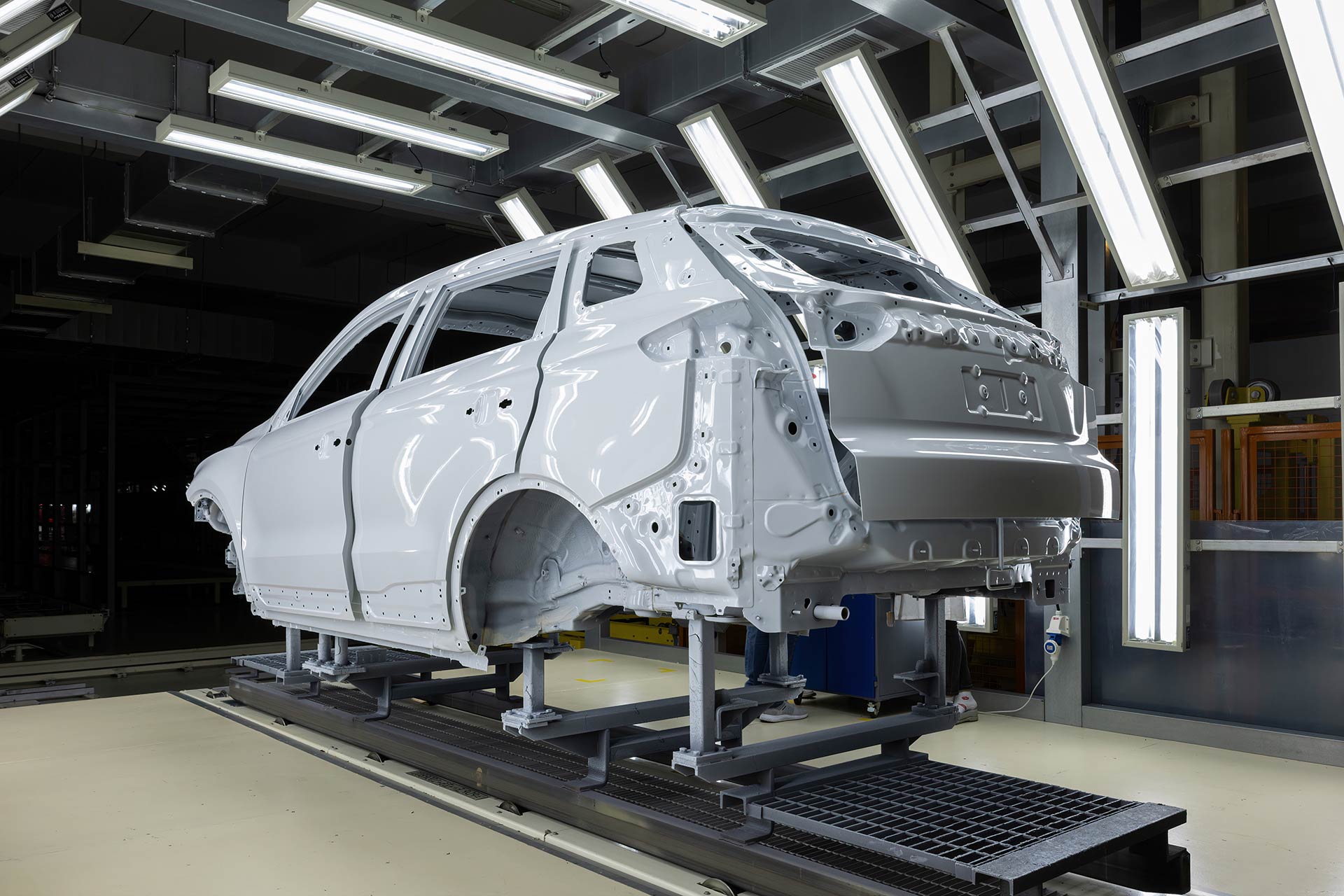Ever wondered what your mechanic is talking about when they start throwing around terms like "OEM parts," "paintless dent repair," or "aftermarket components"? It's like they have their own language. Well, they kind of do, and it's high time you got in on the secret. Understanding auto body repair terminology can transform your next garage visit from a nod-along session to an informed discussion where you're in control. This blog post will demystify the jargon, giving you the confidence to talk shop with the best of them and make informed decisions about your vehicle's care.
Decoding Auto Body Repair Terms
OEM Parts
Original Equipment Manufacturer (OEM) parts are made by the car's maker. They match what came with your car. Using OEM parts ensures high quality and a perfect fit.
However, they can be more expensive than other types. Many prefer them for their reliability and performance.
Aftermarket Parts
Aftermarket parts are made by different companies, not the car's original maker. They are often cheaper than OEM parts.
The quality can vary, so it's important to choose reputable brands. They offer more variety but might not always have the perfect fit like OEM parts.
Paintless Dent Repair
Paintless dent repair (PDR) is a technique used to fix dents without needing to repaint. It's less invasive and can save time and money.
Technicians use special tools to push or pull dents from the inside of the body panel. PDR works best for small to medium-sized dents.
Quote vs. Estimate
A quote is a fixed price for auto body work. Once given, it shouldn't change.
An estimate, on the other hand, is a rough guess of the cost. It can change once the work begins and more issues are found.
Understanding these terms helps you know what you're agreeing to when getting auto body work done.
Bonding
Bonding involves attaching materials together with adhesives. It's often used for repairing cracks or attaching new panels without welding.
This method is strong and durable when done correctly. It also requires less heat, reducing the risk of warping the metal.
Sanding
Sanding smooths out surfaces before painting. It removes old paint, rust, and imperfections.
There are different grits of sandpaper for various stages of sanding. Starting with coarse grits and moving to finer ones achieves a smooth finish.
Priming
Priming prepares the surface for painting by creating a uniform base. It helps paint adhere better and last longer.
Primers also protect against corrosion and ensure a flawless finish. Skipping this step can lead to poor paint quality and durability issues.
Initial Steps in Collision Repair
Damage Assessment
After a car gets into a collision, the first step towards repair is assessing the damage. Technicians start with a visual inspection to identify obvious damages. They look for dents, scratches, and parts that need replacement. This step gives a rough idea of the visible work needed.
Next comes computer diagnostics. Modern cars have complex systems that might not show damage visually. Mechanics use special tools to read the car's computer, checking for any internal issues. This ensures a thorough check, beyond what eyes can see.
Choosing a Shop
Finding the right place for repairs is crucial. It's important to choose a certified repair shop. These shops have technicians trained to handle specific car models. They follow guidelines set by car manufacturers, ensuring high-quality repairs.
Certified shops also have the right tools and technology. This guarantees accurate damage assessment, which is vital for effective repair.
Documentation
Once the assessment is done, documenting everything is key. Technicians take photos of all damages. They write detailed notes about what they found during the visual and computer diagnostics.
This documentation is used to create a detailed repair plan. It outlines all steps needed to fix the car. It includes parts to be repaired or replaced and estimates the time and cost.
Documentation also helps in dealing with insurance claims. It provides clear evidence of the damage and the required repairs.
Understanding Paint Techniques
Color Matching
After the initial collision repair steps, ensuring a perfect color match is crucial. Technicians use a spectrophotometer to scan the car's paint. This tool provides the exact formula based on the vehicle's original color. They then mix the paint accordingly.
This process ensures that the new paint blends seamlessly with the existing one. It eliminates any visible signs of repair, maintaining the car's aesthetic appeal. Achieving this level of precision requires skill and the right technology.
Spray vs Brush
Spray painting is the standard in auto body work. It offers a uniform coat over large areas, resulting in a smooth finish. Technicians use specialized equipment to atomize the paint, allowing for even distribution.
Brush painting, on the other hand, is less common. It's typically used for small touch-ups or detail work. While it can be precise, it doesn't provide the same seamless finish as spraying. Thus, spray painting is preferred for most repairs.
Clear Coating
Finally, applying a clear coat is an essential step in the painting process. This transparent layer adds protection against scratches, UV rays, and corrosion. It also enhances the paint's durability and gives it a glossy finish.
The clear coat must be applied evenly and cured properly to ensure it bonds well with the base paint. This step not only protects the vehicle but also contributes to its shiny appearance.
Exploring Frame Repair Basics
Frame Machines
Frame machines play a crucial role in the auto body repair process. They use hydraulic pressure and torque to straighten bent frames. This equipment ensures that the car's frame returns to its original shape.
Technicians secure the vehicle onto the machine. Then, they apply force precisely where needed. The goal is to restore the frame's structural integrity.
Laser Measuring
Laser measuring systems complement frame machines. They provide accurate measurements of the car's dimensions. This technology ensures that repairs meet exact specifications.
With laser systems, technicians can identify even minor deviations in the frame's alignment. These precise tools help guarantee safety and performance post-repair.
Safety and Performance
Precise frame alignment is non-negotiable for vehicle safety and performance. A properly aligned frame ensures that the car drives straight and handles correctly. It also helps maintain the structural integrity of the vehicle in case of another accident.
Vehicles with misaligned frames can experience uneven tire wear, poor handling, and increased fuel consumption. Thus, accurate repairs are essential.
Damage Assessment
Technicians begin by assessing the extent of frame damage. They use visual inspections and diagnostic tools to understand the impact. This step determines whether a frame can be repaired or must be replaced.
In some cases, repairing a severely damaged frame is more costly than replacing it. Technicians weigh these factors carefully before making a decision.
Repair vs. Replacement
Deciding between repair and replacement involves several considerations. The age of the vehicle, extent of damage, and cost implications play significant roles. Technicians aim to restore safety and functionality while considering economic factors.
Sometimes, replacing a part of the frame is necessary to ensure optimal vehicle performance and safety. In other instances, advanced techniques allow for effective repairs without replacement.
Navigating Insurance and Estimates
Insurance Talks
After understanding the basics of frame repair, it's crucial to know how to deal with insurance companies. First, contact your insurer as soon as possible after an accident. They'll guide you through filing a claim.
It's important to ask about your coverage limits and deductible. These details affect how much you pay out of pocket. Insurers often have preferred auto body shops. Yet, you can choose where to get your car fixed. Make sure to inform them about your choice.
Estimate Gathering
Getting estimates is your next step. Visit several auto body repair shops to compare prices and services. Each shop should provide a detailed estimate. This includes the cost of labor and parts.
When comparing estimates, look beyond the price. Consider the shop's reputation and the quality of parts they use. Some shops might offer cheaper rates but use lower-quality parts.
Understanding Deductibles
Deductibles play a big role in auto body repairs. It's the amount you pay before your insurance covers the rest. If your repair costs are below your deductible, you'll pay out of pocket.
Knowing your deductible helps when comparing repair costs. Sometimes, it might be more cost-effective to pay for minor repairs yourself.
Coverage Limits
Your insurance policy has coverage limits. These are the maximum amounts your insurer will pay for repairs. If the costs exceed this limit, you're responsible for the difference.
Understanding these limits is crucial when choosing a repair shop. Opt for one that offers quality service within your insurance coverage.
Detailing and Protection Methods
Polishing Techniques
After navigating the complexities of insurance and estimates, focusing on restoring your vehicle's appearance becomes paramount. Polishing stands out as a critical step in this process. It removes imperfections and restores shine to the vehicle's surface.
Polishers use special tools and compounds to smooth out scratches and marks. This process not only enhances the car's appearance but also prepares it for further protection methods. Regular polishing can keep a car looking new, preserving its beauty over time.
Waxing Essentials
Waxing follows polishing in the detailing hierarchy. It adds a protective layer on top of the paint, shielding it from UV rays, dirt, and water.
Car waxes come in various forms, including paste, liquid, and spray. Each type offers unique benefits, but all serve to prolong the paint's life. Applying wax regularly ensures that the vehicle maintains a glossy finish, repelling contaminants effectively.
Protective Coatings
Beyond traditional waxing, the application of ceramic coatings represents a leap in vehicle protection technology. These coatings create a hard shell over the paint, offering long-term defense against scratches, chemical stains, and oxidation.
Ceramic coatings require professional application but offer years of protection with proper care. They bond with the paint at a molecular level, providing a durable barrier that is resistant to environmental damages.
Paint Protection Film
Paint protection film (PPF) is another advanced option for safeguarding your vehicle's exterior. This thin polyurethane film acts as a skin that protects against stone chips, bug splatters, and minor abrasions.
PPF is nearly invisible and can be applied to high-impact areas or the entire vehicle body. Its self-healing properties allow it to absorb impacts and return to its original shape, keeping the car’s exterior pristine.
Benefits of Detailing
Regular detailing goes beyond superficial aesthetics; it plays a crucial role in maintaining a vehicle's value and appearance. Vehicles that undergo consistent detailing tend to have higher resale values because they show less wear and tear.
Detailing also allows for early detection of issues like rust or paint damage, which can be addressed before they escalate. Thus, investing in regular detailing is both a protective measure and an economic decision that pays dividends over time.
Safety Measures in Auto Body Work
PPE Importance
Technicians must wear personal protective equipment (PPE). This includes gloves, goggles, and respirators. These items keep them safe from chemicals and debris.
Gloves protect hands from sharp objects and harmful substances. Goggles shield eyes from flying particles. Respirators prevent the inhalation of dangerous fumes. Without PPE, workers are at risk of injuries and health issues.
Hazardous Materials
Handling hazardous materials requires strict protocols. Paints and solvents used in auto body work can be dangerous.
Workers must know how to safely use and dispose of these substances. They learn this through training and safety manuals. Proper handling ensures a safer workplace for everyone.
Ventilation Systems
A good ventilation system is crucial in an auto body shop. It removes harmful fumes from the work area.
This keeps the air clean and safe to breathe for technicians. It also reduces the risk of fire from flammable vapors. A well-ventilated space is a priority for worker safety.
Advanced Repair Techniques
3D Printing
Auto body shops are now harnessing the power of 3D printing to create custom parts. This technology allows for the precise production of components that may no longer be available on the market or are too costly. It significantly reduces the waiting time for parts.
With 3D printing, technicians can replicate complex geometries. This ensures a perfect fit every time. The use of this cutting-edge technology not only speeds up the repair process but also maintains the original integrity of the vehicle.
Computerized Paint Matching
Gone are the days of mismatched paint jobs thanks to computerized paint matching systems. These advanced tools analyze the existing paint color and formulate a match that is virtually indistinguishable from the original. This system guarantees a seamless finish, preserving the vehicle's aesthetic appeal.
The precision of computerized paint matching eliminates guesswork. It ensures that the repaired area blends perfectly with the rest of the car. This technology is crucial for maintaining a car's value and appearance after an accident.
Advanced Materials
The auto repair industry is increasingly turning to advanced materials like carbon fiber and aluminum. These materials offer superior strength and lightweight properties compared to traditional steel. Using them in repairs can enhance a vehicle's durability and performance while reducing its weight.
Carbon fiber is known for its exceptional strength-to-weight ratio. It is becoming a popular choice for high-performance vehicles. Aluminum, on the other hand, offers corrosion resistance and contributes to fuel efficiency by lightening the vehicle. Both materials require specialized repair techniques that ensure the structural integrity and safety of the car post-repair.
Closing Thoughts
Navigating the world of auto body repair doesn't have to be a maze. You've now got the lowdown on everything from the initial steps after a collision to the nitty-gritty of paint techniques and frame repairs. With this knowledge, you're better equipped to handle the unexpected, ensuring your ride gets the care it deserves. Remember, understanding these terms not only helps in communicating with technicians but also empowers you to make informed decisions about your vehicle's care.
Don't let auto body repair terms throw you for a loop anymore. Keep this guide handy, and you'll be talking shop like a pro in no time. And hey, if you ever find yourself scratching your head over an estimate or a repair technique, come back to this post. Your car is a significant investment—protect it by staying informed and choosing the right professionals for the job. Ready to take your auto savvy to the next level? Dive deeper into our resources or reach out for expert advice today.
Frequently Asked Questions
What does OEM stand for in auto body repair?
OEM stands for Original Equipment Manufacturer. It refers to parts made by the vehicle's manufacturer, ensuring a perfect fit and optimal performance for your car.
How long does the collision repair process usually take?
The duration of collision repair can vary widely based on the extent of damage. Minor repairs may take a few days, while extensive damage could require several weeks.
What is paintless dent repair (PDR)?
Paintless Dent Repair (PDR) is a technique used to remove minor dents and dings from a vehicle's body without the need for painting, maintaining the original finish.
Can frame damage on a car be repaired?
Yes, frame damage can be repaired. With advanced frame straightening techniques, professionals can restore the vehicle's frame to its original specifications.
How do I understand the estimate provided by the auto body shop?
An estimate should detail the repair work needed, parts required, and labor costs. Ask your technician to walk you through each item to ensure clarity and understanding.
What are some common safety measures in auto body work?
Common safety measures include wearing protective gear, using proper ventilation systems to avoid inhaling toxic fumes, and adhering to guidelines when operating machinery to prevent accidents.
Why is detailing important after auto body repair?
Detailing restores your vehicle's aesthetic appeal post-repair by addressing minor imperfections, protecting the paintwork, and ensuring it looks as good as new.
